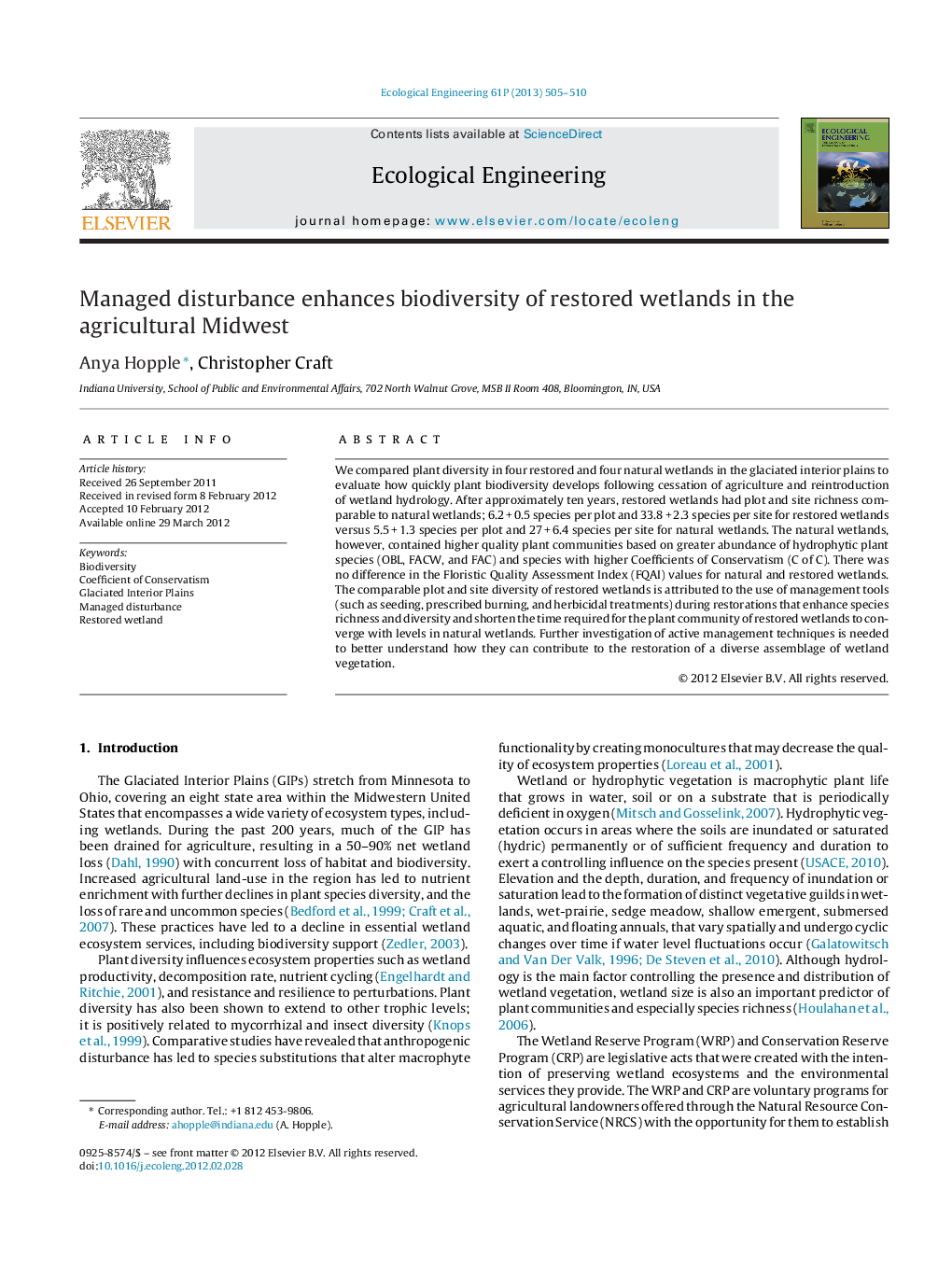| Article ID | Journal | Published Year | Pages | File Type |
|---|---|---|---|---|
| 4389518 | Ecological Engineering | 2013 | 6 Pages |
We compared plant diversity in four restored and four natural wetlands in the glaciated interior plains to evaluate how quickly plant biodiversity develops following cessation of agriculture and reintroduction of wetland hydrology. After approximately ten years, restored wetlands had plot and site richness comparable to natural wetlands; 6.2 + 0.5 species per plot and 33.8 + 2.3 species per site for restored wetlands versus 5.5 + 1.3 species per plot and 27 + 6.4 species per site for natural wetlands. The natural wetlands, however, contained higher quality plant communities based on greater abundance of hydrophytic plant species (OBL, FACW, and FAC) and species with higher Coefficients of Conservatism (C of C). There was no difference in the Floristic Quality Assessment Index (FQAI) values for natural and restored wetlands. The comparable plot and site diversity of restored wetlands is attributed to the use of management tools (such as seeding, prescribed burning, and herbicidal treatments) during restorations that enhance species richness and diversity and shorten the time required for the plant community of restored wetlands to converge with levels in natural wetlands. Further investigation of active management techniques is needed to better understand how they can contribute to the restoration of a diverse assemblage of wetland vegetation.
► Management tools enhance the plant community richness of restored wetlands. ► These tools include prescribed fire, herbicidal treatments, and seeding. ► Restored wetlands contain species of lower quality and vegetation indicator status. ► These differences may be linked to dispersal limitations and site hydrology.
